

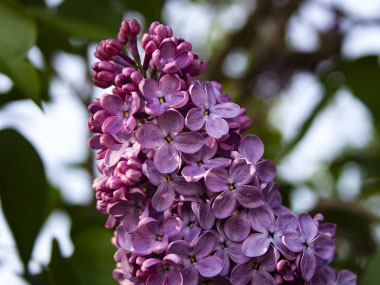
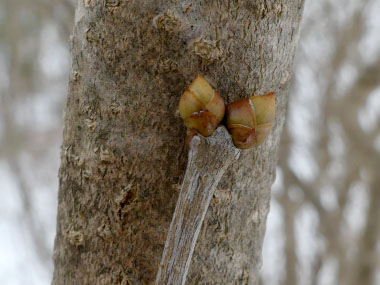
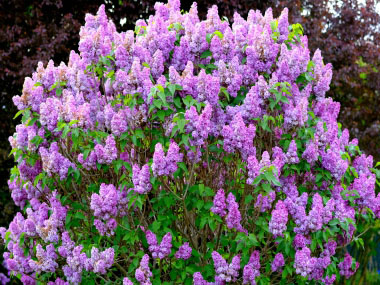

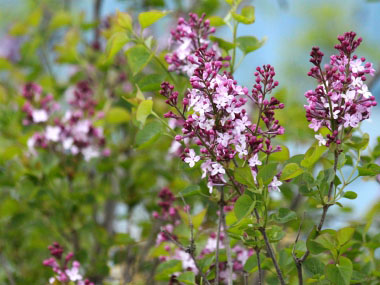
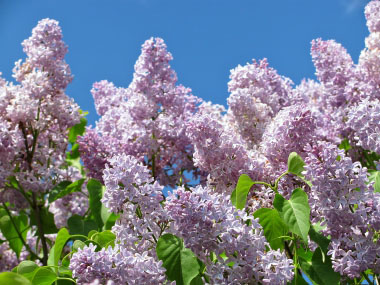
To support our efforts please browse our store (books with medicinal info, etc.).
This springtime favourite is a deciduous shrub (or tree) that can grow quite tall. Lilacs are in the Oleaceae (olive) family, this shrub sometimes looks like a small tree. The lilac is perhaps the most sought-after blooms to add a soft, yet pleasant scent to homes. Depending on the variety, some lilacs are considered either a shrub or a tree. Shrub lilacs and bush lilacs are short and compact. The classic definition of a tree is that it is over 4m (13') tall and has a single trunk. Tree lilacs can grow up to 7 m (25') high and have a tree-like appearance, but their many stems tend to get them classified as bushes. They are not technically trees, but they get big enough that you can treat them as if they are.
Trunk/Bark
Bark is light to dark grey, smooth when it is young and shreds when it’s older and larger in diametre. Stems are stout, small, with raised lenticels and raised leaf scars.
Branches/Twigs
Branches can grow fairly straight or turn into many winding stems moving in a twisting and spiral course. Lower parts of the branches and twigs do not grow leaves.
Height
Once mature lilac shrubs can grow to 2 to 5 m (7 to 16′) and can get up to 3 m (12′) wide.
Leaves/Needles
Leaves are simple, opposite, ovate, 5 to 10 cm (2 to 4') long and vibrant green. Many leaves are shaped like a heart.
Flowers
The common lilac flowers (Syringa vulgaris) are lilac, fragrant, and depending on geographic location bloom in May. Flowers are borne in large terminal panicles that are 10 to 20cm (4 to 8") long and quite showy.
Fruit
Common lilac (Syringa vulgaris) fruit capsules are borne in large panicles that are located at the terminal tips of branches. Capsules are beaked.
Habitat
Many lilac bushes can be found in fields, open areas and in cultivated gardens. They tend to prefer full sun.
Edible Parts
Flowers only. Use to make a cordial, tea, or add to a salad.
Other Name
Common Lilac.
Recipes
Winter Survival Food Handbook

PDF Plant Magazines
Types of Wild Food
Geographic Zones Seasons
Disclaimer
EdibleWildFood.com is informational in nature. While we strive to be 100% accurate, it is solely up to the reader to ensure proper plant identification. Some wild plants are poisonous or can have serious adverse health effects.
We are not health professionals, medical doctors, nor are we nutritionists. It is up to the reader to verify nutritional information and health benefits with qualified professionals for all edible plants listed in this web site. Please click here for more information.
Why Edible Wild Food?
- Food costs are rising
- Free, wild food is readily abundant
- Wild food adds nutrition to your diet
- Wild food can help treat various medical conditions





